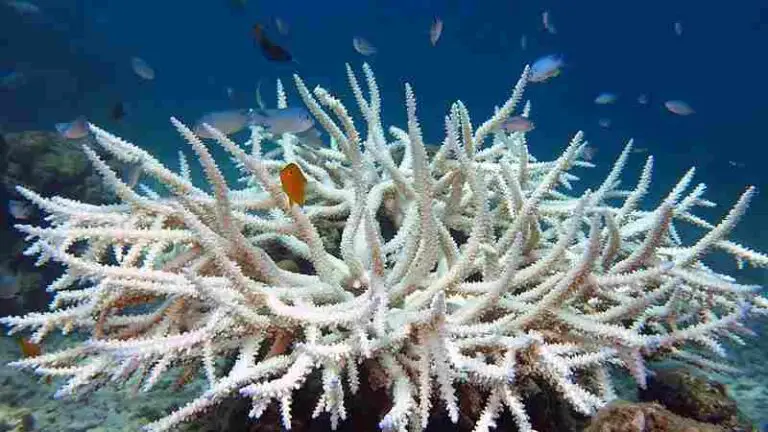7 Examples of Energy Resources Explained
Examples of energy resources are; fossil fuels, nuclear fuel, solar, wind, geothermal, wave and hydro energy resources.
This article discusses examples of energy resources in terms of renewable and non-renewable categories, as outlined below;
-Examples of Non-Renewable Energy Resources
-Examples of Renewable Energy Resources
-Examples of Non-Renewable Energy Resources
1). Fossil Fuels (as one of the Examples of Energy Resources)
Fossil fuels are non-renewable energy resources produced from biomass.
The origin of fossil fuels can be traced to accumulation of large amounts of plant and animal matter and their gradual anaerobic conversion over millions of years [3].
These resources typically occur in the Earth’s crust, from which they can be extracted for use.
Fossil fuels include petroleum, natural gas, and coal; all of which share similar chemical compositions that are dominated by hydrocarbons.
Globally, fossil fuels constitute the highest proportion of energy resources used in all sectors of the economy; covering up to 80% of total energy production in developed countries like the United States [2].
The use of fossil fuels for electricity generation, heating and transport, is associated with major environmental impacts, diverse forms of degradation like air pollution, oil spill, and climate change.
These issues have led to the development of concepts like the energy transition, although a complete replacement of fossil fuels as energy resources has been delayed by factors like low relative energy efficiency and density.
2). Nuclear Fuel
Nuclear fuel is another example of a non-renewable energy resource which is extracted from the Earth’s crust.
This fuel typically occurs in the form of radioactive elements or radioisotopes, with Uranium-235 and Plutonium-239 being among the most common.
Nuclear fuels are broken down through radioactive reactions to release energy in a nuclear power plant.
Before they can be used as fuel, these materials require some processing, which includes shaping them into pellet-form for easy introduction into the reactor.
Nuclear fuels are highly energetic. The energy (nuclear energy) from these resources can be made to resemble renewable energy through a mechanism of fuel regeneration or recycling, that is utilized in a specialized type of nuclear reactor called the ‘breeder reactor’.
Also, nuclear energy is widely believed to be clean, as there are no significant greenhouse emissions produced from the breakdown of nuclear fuels [1].
However, the overall lifecycle of nuclear fuels is not always clean, as there can be significant emissions released in the process of extracting and processing nuclear fuels.

-Examples of Renewable Energy Resources
Examples of renewable energy resources include solar, wind, geothermal, wave, and hydro energy.
3). Solar Energy (as one of the Examples of Energy Resources)
Solar energy is a renewable energy resource that occurs in the form of radiation from the Sun.
It is similar to nuclear energy in its origin, as it comes solely from nuclear fusion reactions between hydrogen radioisotopes [4].
Solar energy is the most common and freely-available renewable energy resource known on Earth. It is also among the most developed renewable energy resources, with multiple innovative efforts being made to produce modified solar systems like the organic solar cell, among others.
The forms in which solar energy resources can be captured (or the forms in which solar energy occurs) include heat and light.
Technologies used to harness solar energy are mostly solar panels, concentrators, water-based energy storage systems, and some cogeneration systems.
Solar energy may be stored in specialized solar batteries, to increase sustainability.
4). Wind Energy
Wind energy is renewable kinetic energy from air currents, which can be captured and converted to generate electricity, among other functions.
It can be considered to be the cleanest form of energy on Earth, given that wind energy has about the lowest environmental impact among all available energy resources.
Technologies used to harness wind energy resource include various types of wind turbines. For large-scale wind energy capture and electricity generation, wind farms are utilized, which comprise of multiple wind turbines and is the equivalent of power plants.
5). Geothermal Energy (as one of the Examples of Energy Resources)
Geothermal energy is heat energy from magma in the Earth’s crust, which is stored in water and other conductive subsurface fluids.
This form of energy is renewable because hot magma and radioactive elements are always present in the Earth’s crust.
Geothermal energy is usually released in the form of heated fluids from hydrothermal vents such as springs, fumaroles, and geysers [5].
Aside heating, geothermal energy may also be used with steam turbines to generate electricity, although additional heat from other energy resources may be needed to achieve this purpose.

6). Wave Energy
Wave energy is produced when oceans capture the kinetic energy of wind and convert it into mechanical energy which causes the water to move in large successive sheets called waves.
It is believed to have the highest energy density of all renewable energy options due to the large amounts of wind energy that can be captured by waves.
In order for wave energy to be harnesses, a wave energy converter is usually needed; which is typically a floating apparatus equipped with movable parts that convert the energy into electricity.
Due to its high density, wave energy has a very high potential as a useful alternative energy resource for effective energy transition from non-renewables, and for sustainable development as well as circular economy.
However, it is generally difficult to harness and transmit the generated power, due to the mobile, offshore nature of this type of energy.
7). Hydro Energy (as one of the Examples of Energy Resources)
Hydro energy is energy from flowing water.
It is one of the oldest-known and most reliable renewable energy resources. It is also technically simple to set-up, compared to other energy systems.
For hydro energy to function effectively, large quantities of water are required. This may be obtained by storage using water dams; which are also useful tools for controlling manmade and natural hazards like flooding, stormwater pollution, and erosion.
Conclusion
Examples of energy resources are;
1. Fossil Fuels
2. Nuclear Fuel
3. Solar Energy
4. Wind Energy
5. Geothermal Energy
6. Wave Energy
7. Hydro Energy
References
1). Alonso, A.; Brook, B. W.; Meneley, D. A.; Misak, J.; Blees, T.; Erp, J. B. (2015). “Why nuclear energy is essential to reduce anthropogenic greenhouse gas emission rates.” EPJ Nuclear Sciences & Technologies 1:3. Available at: https://doi.org/10.1051/epjn/e2015-50027-y. (Accessed 17 November 2022).
2). Desilver, D. (2020). “Renewable energy is growing fast in the U.S., but fossil fuels still dominate.” Available at: https://www.pewresearch.org/fact-tank/2020/01/15/renewable-energy-is-growing-fast-in-the-u-s-but-fossil-fuels-still-dominate/. (Accessed 17 November 2022).
3). Edeki, O. G.; Cowan, A. K. (2014). “Approaches to bioremediation of fossil fuel contaminated soil: An overview.” AFRICAN JOURNAL OF BIOTECHNOLOGY 13(26):2593-2607. Available at: https://doi.org/10.5897/AJB2013.13019. (Accessed 17 November 2022).
4). Haider, Q. (2019). “Nuclear Fusion: Holy Grail of Energy. In (Ed.), Nuclear Fusion – One Noble Goal and a Variety of Scientific and Technological Challenges.” IntechOpen. Available at: https://doi.org/10.5772/intechopen.82335. (Accessed 17 November 2022).
5). Heasler, H.; Jaworowski, C.; Foley, D. (2009). “Geothermal systems and monitoring hydrothermal features.” Available at: https://www.semanticscholar.org/paper/Geothermal-systems-and-monitoring-hydrothermal-Heasler-Jaworowski/42f2bc8f1b8d9b4da38e8acb37ca79878afa636c. (Accessed 17 November 2022).





